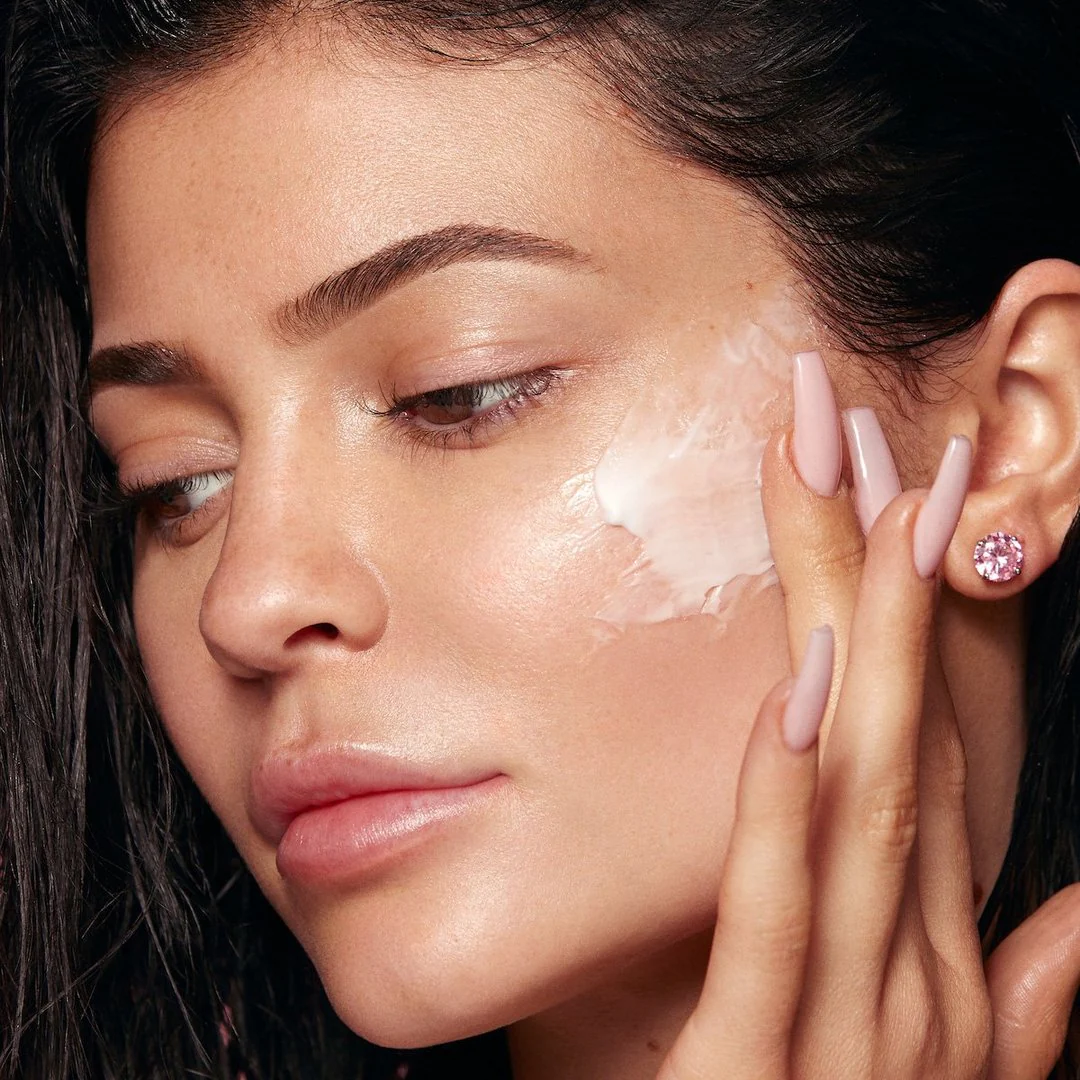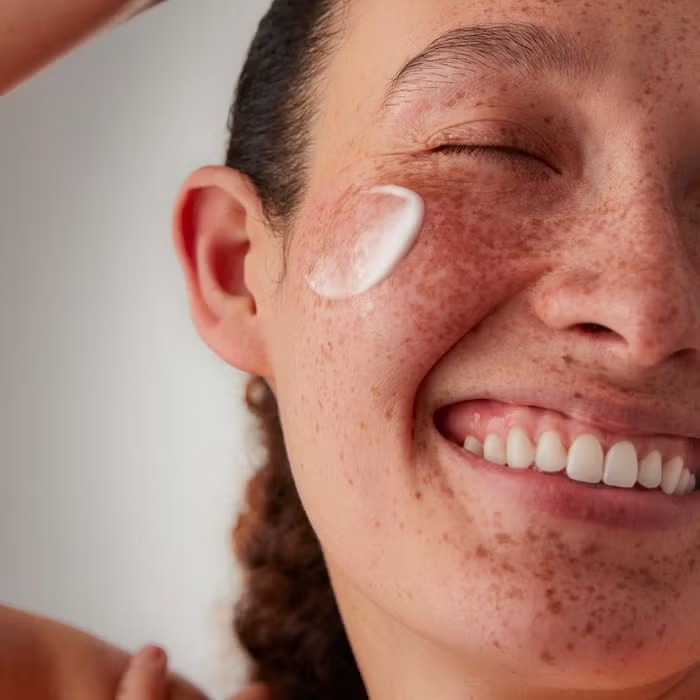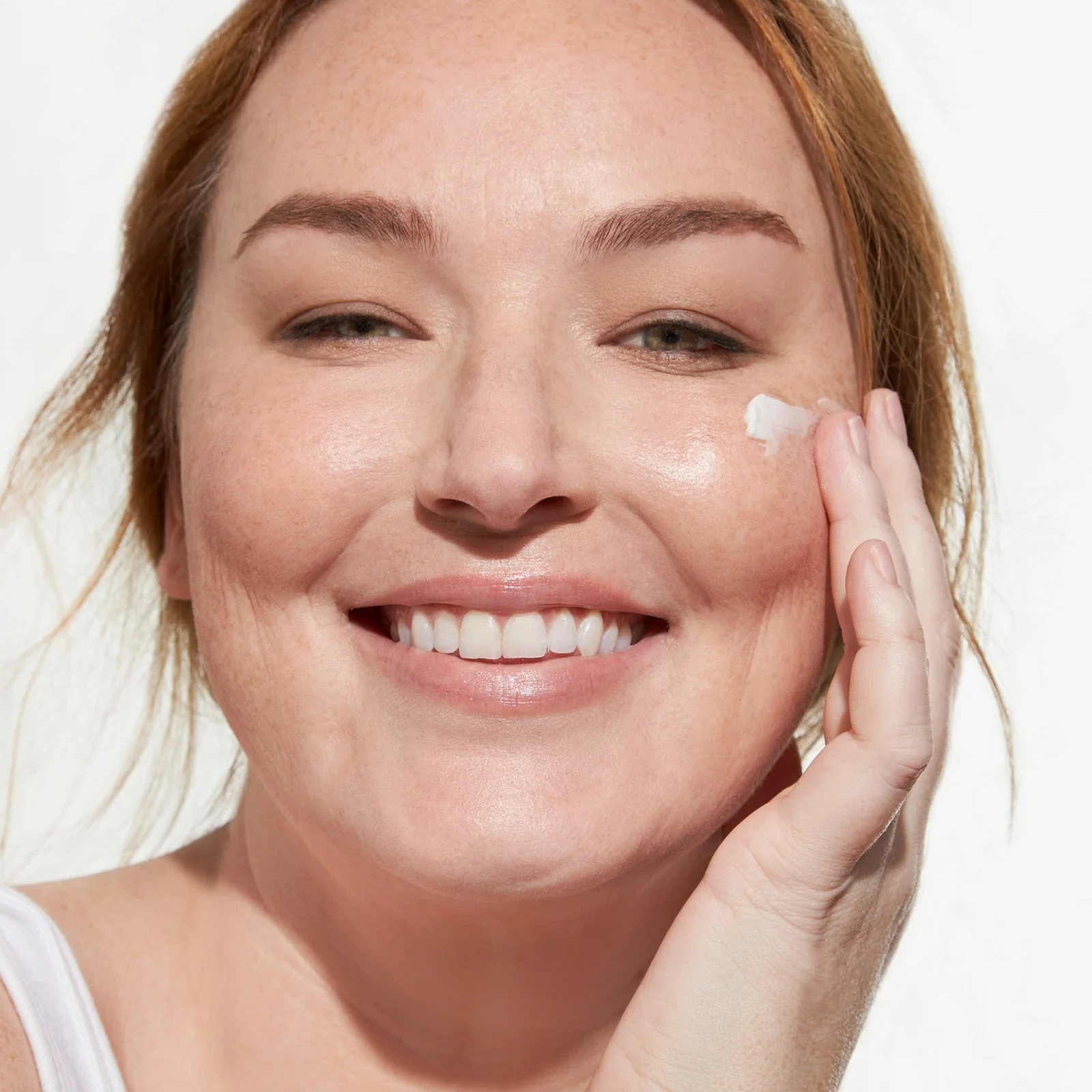
Best Face Lotion for Combination Skin:Balancing Act
Understanding Combination Skin
Combination skin presents a unique challenge in skincare, characterized by areas of both oiliness and dryness on the face. Typically, the T-zone (forehead, nose, and chin) tends to be oily, while the cheeks and other areas may be normal to dry. This skin type requires a delicate balance in skincare, especially when it comes to choosing the right face lotion. Factors contributing to combination skin include genetics, hormonal changes, and environmental influences. People with combination skin often struggle to find products that address both their oily and dry areas without exacerbating either condition.
The oily parts of the face may be prone to acne and enlarged pores, while the dry areas might experience flakiness or tightness. Understanding the dual nature of combination skin is crucial in selecting appropriate skincare products. The ideal face lotion for this skin type should provide adequate hydration to dry areas without over-moisturizing oily zones. Additionally, it should help regulate sebum production in oily areas while maintaining the skin’s natural balance. Recognizing the specific needs of combination skin allows for a more targeted and effective skincare approach, ultimately leading to a healthier, more balanced complexion.

Key Ingredients for Combination Skin
Selecting the right face lotion for combination skin involves looking for specific ingredients that address both oily and dry areas. Hyaluronic acid stands out as an excellent hydrator that doesn’t clog pores, making it ideal for all areas of combination skin. Niacinamide helps regulate oil production while also improving the skin’s barrier function, benefiting both oily and dry zones. Glycerin, a humectant, attracts moisture to the skin without leaving a greasy residue. For oil control, look for ingredients like salicylic acid or tea tree oil, which can help manage excess sebum in the T-zone. Antioxidants such as vitamin C and green tea extract protect the skin from environmental damage and can help balance skin tone.
Light, non-comedogenic oils like jojoba or grapeseed oil provide hydration without clogging pores. Ceramides help strengthen the skin barrier, which is beneficial for both oily and dry areas. Alpha-hydroxy acids (AHAs) like glycolic or lactic acid can help with gentle exfoliation, improving skin texture across all areas. When choosing a face lotion, look for products that combine several of these beneficial ingredients. Equally important is avoiding heavy, pore-clogging ingredients that can exacerbate oiliness in some areas while potentially not providing enough hydration to others.
Top Face Lotions for Combination Skin
Several face lotions stand out for their effectiveness in treating combination skin. Neutrogena Hydro Boost Water Gel tops many lists with its lightweight, hyaluronic acid-rich formula that hydrates without clogging pores. This gel-cream texture is particularly suitable for combination skin. Another popular choice is La Roche-Posay Effaclar Mat, which provides oil-free hydration while mattifying oily areas. CeraVe PM Facial Moisturizing Lotion offers a balanced approach with ceramides and niacinamide, suitable for nighttime use on combination skin.
For those seeking natural options, The Ordinary Natural Moisturizing Factors + HA provides a no-frills, effective moisturizer that works well for various skin types, including combination. Clinique Dramatically Different Moisturizing Gel has long been a go-to for combination skin, offering oil-free hydration that doesn’t feel heavy. Kiehl’s Ultra Facial Oil-Free Gel Cream provides lasting hydration with a refreshing, lightweight feel. Murad Clarifying Oil-Free Water Gel contains salicylic acid, making it excellent for combination skin prone to breakouts. These top-rated lotions cater to the unique needs of combination skin, providing options for different preferences and concerns within this skin type.

Application Techniques for Combination Skin
Proper application of face lotion is crucial for managing combination skin effectively. Start with clean, slightly damp skin to enhance product absorption. For combination skin, consider using different application techniques for different areas of the face. In oily zones, typically the T-zone, apply a thin layer of lotion using gentle, patting motions. This approach provides necessary hydration without over-moisturizing. For drier areas, usually the cheeks and outer portions of the face, use slightly more product and massage it in with circular motions to ensure thorough absorption. Some individuals with combination skin benefit from a targeted approach, using a lighter gel-based moisturizer on oily areas and a richer cream on dry patches.
When applying lotion, start with a small amount and add more if needed, as it’s easier to add product than to remove excess. Pay attention to how your skin responds throughout the day and adjust the amount of product used accordingly. For daytime use, follow up with a lightweight, non-comedogenic sunscreen to protect all areas of the face from UV damage. Consistency is key; apply the lotion twice daily for best results. During seasonal changes, you may need to adjust your application technique or switch to a different product to accommodate changing skin needs.
Complementary Skincare Practices for Combination Skin
A comprehensive skincare routine supports the effectiveness of face lotions for combination skin. Gentle cleansing forms the foundation of this routine. Use a mild, pH-balanced cleanser that removes impurities without stripping the skin of its natural oils. Consider double cleansing in the evening, especially if wearing makeup or sunscreen. Incorporate a toner to help balance the skin’s pH and provide an extra layer of hydration. Look for alcohol-free formulas that won’t dry out the skin. Exfoliation is crucial for combination skin but should be done carefully. Use a gentle chemical exfoliant like salicylic acid or lactic acid once or twice a week to remove dead skin cells and unclog pores. For additional hydration, consider using a hyaluronic acid serum before applying face lotion.
This can help attract moisture to the skin without adding oil. Weekly clay masks can help manage oiliness in the T-zone, while hydrating masks can be applied to drier areas. Sun protection is essential; choose a lightweight, broad-spectrum sunscreen that won’t clog pores. Pay attention to your diet and lifestyle, as factors like stress and certain foods can affect skin balance. Stay hydrated by drinking plenty of water throughout the day. By incorporating these complementary practices, individuals can create a holistic skincare routine that addresses the unique needs of combination skin.

Common Mistakes to Avoid with Combination Skin
Several common mistakes can exacerbate issues for those with combination skin. Over-cleansing is a frequent error; washing the face too often or with harsh products can strip the skin of natural oils, leading to increased oil production in some areas and dryness in others. Another mistake is using the same heavy moisturizer all over the face, which can clog pores in oily areas while not providing enough hydration to dry patches. Conversely, avoiding moisturizer altogether on oily areas can lead to dehydration and increased oil production. Applying too many products or layering incompatible ingredients can overwhelm combination skin and disrupt its balance.
Overuse of mattifying products on oily areas can lead to excessive dryness, while using too many hydrating products can exacerbate oiliness. Neglecting sunscreen is a critical error, as UV damage can worsen skin imbalances. Some individuals make the mistake of frequently changing products without giving them enough time to show results, leading to further skin confusion. Ignoring seasonal changes and not adjusting skincare routines accordingly can also be problematic for combination skin. Overexfoliating is another common pitfall; while exfoliation is beneficial, too much can damage the skin barrier and increase sensitivity. By avoiding these common mistakes, individuals can significantly improve the health and appearance of their combination skin.
Addressing Specific Concerns: Acne and Aging
Combination skin often comes with specific concerns like acne in oily areas and signs of aging in drier zones. For acne-prone areas, look for face lotions containing salicylic acid or benzoyl peroxide to help manage breakouts. These ingredients should be used cautiously to avoid over-drying. Niacinamide can be particularly beneficial, as it helps regulate oil production while also providing anti-aging benefits. For addressing signs of aging, particularly in drier areas, consider lotions with retinol or peptides to promote collagen production and improve skin texture. However, these ingredients should be introduced gradually to avoid irritation. Antioxidants like vitamin C can help protect against environmental damage and brighten the complexion, benefiting both oily and dry areas.
Hyaluronic acid remains a key ingredient, providing hydration to all areas without exacerbating acne. For those dealing with both acne and aging concerns, multi-tasking products that address both issues can be particularly effective. It’s important to be patient and consistent with skincare routines, as addressing these concerns takes time. Regular use of non-comedogenic sunscreen is crucial in preventing further sun damage and protecting against both acne and signs of aging. By carefully selecting products that address these specific concerns, individuals with combination skin can effectively manage both acne and aging issues.
Natural and DIY Options for Combination Skin
Natural and DIY face lotions offer alternatives for those seeking to avoid synthetic ingredients in their skincare routine. Aloe vera gel stands out as a natural moisturizer suitable for combination skin, providing hydration without clogging pores. Jojoba oil closely mimics the skin’s natural sebum, making it an excellent option for balancing oil production. Green tea, when applied topically, offers antioxidant benefits and can help manage oiliness. Honey, known for its humectant and antibacterial properties, can be used as a natural face mask to hydrate and soothe combination skin. For a DIY toner, mix equal parts apple cider vinegar and water to help balance the skin’s pH. Oatmeal, when finely ground, can be mixed with yogurt to create a soothing, moisturizing mask suitable for all areas of combination skin.
Cucumber juice can be applied as a natural astringent to oily areas while providing hydration to drier zones. When creating homemade lotions, it’s crucial to use high-quality, organic ingredients and practice proper hygiene to avoid contamination. Always patch test DIY products before applying them to the entire face. While natural options can be effective, they may not be suitable for everyone, particularly those with severe skin imbalances or sensitivities. It’s important to research ingredients thoroughly and consult with a dermatologist if unsure about their suitability for your skin type.

The Role of Lifestyle in Managing Combination Skin
Lifestyle factors play a significant role in managing combination skin, complementing the effects of face lotions. Diet stands out as a crucial element; consuming a balanced diet rich in fruits, vegetables, and omega-3 fatty acids can help improve overall skin health. Staying well-hydrated by drinking plenty of water throughout the day supports skin balance. Managing stress is another key factor, as stress can exacerbate skin issues and lead to increased oil production. Regular exercise can improve circulation and promote healthy skin, but it’s important to cleanse the face properly after workouts to prevent clogged pores. Getting adequate sleep allows the skin time to repair and regenerate, contributing to a more balanced complexion.
Environmental factors also play a role; protecting the skin from excessive sun exposure and pollution can help maintain its balance. Using a humidifier in dry environments can prevent the skin from becoming dehydrated, which can lead to increased oil production. Avoiding touching the face throughout the day helps prevent the transfer of bacteria and excess oil. Regularly cleaning items that come into contact with the face, such as phones and pillowcases, can also help manage combination skin. By addressing these lifestyle factors, individuals can create a holistic approach to managing their combination skin, enhancing the effectiveness of their chosen face lotions and overall skincare routine.
Future Trends in Skincare for Combination Skin
The skincare industry continually evolves, bringing new innovations for combination skin. Personalized skincare is emerging as a significant trend, with companies offering customized formulations based on individual skin needs and environmental factors. This approach is particularly beneficial for combination skin, which requires a nuanced treatment. Microbiome-focused skincare is gaining attention, with products designed to support the skin’s natural bacterial balance, potentially helping to regulate oil production and hydration. Sustainable and eco-friendly options are becoming more prevalent, addressing consumer concerns about environmental impact while providing effective solutions for combination skin.
Advanced delivery systems, such as nanoparticles and microencapsulation, promise more targeted treatment for different areas of combination skin. Adaptogenic ingredients, known for helping the body resist stressors, are being incorporated into skincare formulations to help balance combination skin. Artificial intelligence and machine learning are being utilized to analyze skin conditions and recommend optimal products and routines, offering more precise care for the varied needs of combination skin. As research in skin biology progresses, we can expect more targeted solutions for specific skin concerns within the combination skin category. These emerging trends promise exciting developments in the care of combination skin, potentially offering more effective and personalized solutions in the future.

